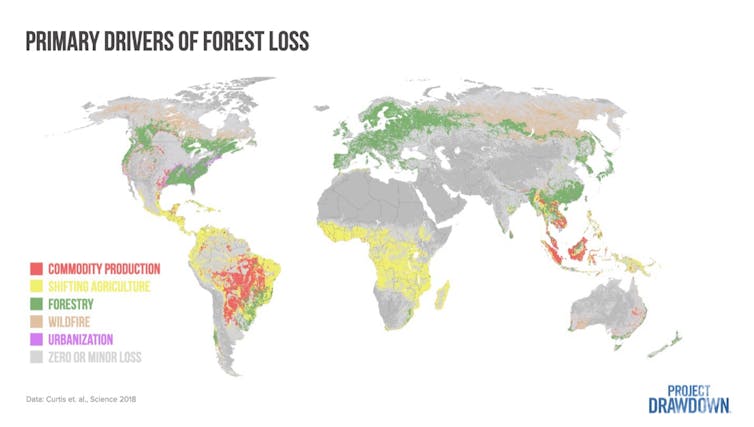Source: The Conversation – (in Spanish) – By Ana Corachán García, Investigadora Postdoctoral en Medicina Reproductiva, Instituto de Investigación Sanitaria La Fe
Una de cada tres mujeres en edad reproductiva presenta miomas uterinos, unos tumores que crecen en la capa muscular del útero. A pesar de ser benignos, causan síntomas que afectan notablemente a la calidad de vida. En concreto, las personas afectadas experimentan reglas abundantes y dolorosas, anemia, dolor en la parte baja del abdomen, incontinencia urinaria, infertilidad y aborto recurrente.
Aunque existen distintos tratamientos, como terapias hormonales y procedimientos quirúrgicos, no hay ninguno totalmente eficaz ni sin efectos secundarios. Pero ¿y si algo tan sencillo e inocuo como la vitamina D fuera la solución? Veamos primero cómo se aborda actualmente este extendido problema.
Los límites de los tratamientos
El tratamiento más habitual es la cirugía. Existen dos opciones: la eliminación solo de los miomas, conocida como miomectomía, o la extirpación del útero completo, lo que se conoce como histerectomía. Este último es el único método capaz de eliminarlos por completo, pero también impide que las pacientes puedan quedarse embarazadas en el futuro.
En cuanto a la miomectomía, más de la mitad de las mujeres vuelve a presentar miomas en los cinco años posteriores a la cirugía. Por tanto, a pesar de ser un tratamiento muy invasivo, no es efectivo. Además, estas intervenciones suponen un alto coste a los sistemas de sanidad: el gasto anual estimado es de 34 000 millones de dólares en Estados Unidos, 348 millones de euros en Alemania y 120 millones en Francia.
Como alternativa, existe la opción de los medicamentos. Para comprender cómo funcionan, debemos tener en cuenta que son las hormonas sexuales, los estrógenos y la progesterona, los que controlan el crecimiento de los miomas. Basándose en esto, los fármacos bloquean la acción de dichas hormonas.
Ahora bien, las hormonas sexuales tienen un papel clave en la reproducción femenina. Esto quiere decir que los medicamentos que las bloquean producen síntomas similares a la menopausia como sofocos, osteoporosis e infertilidad. Por este motivo, no pueden administrase durante periodos largos, lo cual conlleva que los miomas vuelvan a crecer cuando se deja el tratamiento. Además, al causar infertilidad, tampoco son una opción en mujeres que quieran quedarse embarazadas.
Siguiendo la pista de la vitamina D
En la búsqueda de alternativas terapéuticas llamó la atención uno de los factores de riesgo: las mujeres con miomas presentan niveles de vitamina D más bajos que las mujeres sin miomas. Entonces, ¿podría este compuesto frenar su desarrollo? Es la misma pregunta que se hizo la comunidad científica, y comenzó a investigar en profundidad.
Pero en primer lugar, ¿qué es la vitamina D? Conocida como “la vitamina del sol”, ya que la mayor parte se produce naturalmente en la piel con la exposición a la luz solar, se trata de un nutriente esencial para que el cuerpo humano funcione correctamente. Su cometido principal reside en ayudar al organismo a absorber el calcio, un proceso necesario para tener huesos fuertes y sanos.
Leer más:
Mitos y realidades sobre la vitamina D: ¿estamos abusando de los complementos?
Aunque eso no es todo. También resulta indispensable para el adecuado funcionamiento del sistema inmunitario, muscular y nervioso. De hecho, los niveles bajos de vitamina D se relacionan con multitud de enfermedades.
Experimentos prometedores
Para averiguar si la vitamina D puede ser un tratamiento viable de los miomas, el primer paso fue estudiar su efecto en el laboratorio. Los primeros experimentos demostraron que frenaba el crecimiento de las células de mioma cultivadas in vitro. Después, se confirmó que reducía el tamaño de estos tumores en un modelo animal de ratón, sin efectos secundarios sobre su salud.
Esos resultados sentaron las bases para evaluar el tratamiento en mujeres con miomas y déficit de vitamina D. En primer lugar, los investigadores comprobaron que cuando las afectadas eran tratadas con dosis altas de esa vitamina, el crecimiento de los miomas se frenaba.
Sin embargo, hay que tener en cuenta que un exceso de vitamina D es malo: puede causar náuseas, vómitos, debilidad o fallo en el funcionamiento de los riñones. Teniendo esto en cuenta, un estudio reciente ha demostrado que dosis bajas de la vitamina reducen también el tamaño de los miomas. Estos confirma que no hace falta usar cantidades tan elevadas para frenar su crecimiento, reduciendo los posibles efectos secundarios de la terapia.
Como hemos comentado, los medicamentos actuales causan infertilidad en las pacientes con miomas, y tal vez se está preguntando si eso también ocurriría con la vitamina D. Pues bien, lo que se sabe hasta la fecha es que no solo no influye negativamente en la fertilidad, sino que incluso puede mejorarla.
Los resultados son esperanzadores, pero hay que tener en cuenta que el efecto de la vitamina D solo se ha probado en mujeres con niveles de este nutriente por debajo de la normalidad. Esto quiere decir que no se sabe si reduciría el tamaño de los miomas en mujeres con niveles normales.
Por último, es importante recordar que el tratamiento siempre debe ser prescrito por personal sanitario cualificado, dado el riesgo de ingerir dosis elevadas de esa vitamina. Además, cada mujer y cada mioma son únicos, por lo que los tratamientos pueden variar de una persona a otra.
En resumen, la vitamina D podría frenar el crecimiento de los miomas o incluso prevenir su aparición. Es un tratamiento seguro, sin efectos negativos sobre la fertilidad y, además, económico. Su uso podría mejorar la calidad de vida de muchas mujeres y reducir los costes para los sistemas de salud públicos. Aunque todavía se necesitan más estudios, parece que podría ser una clave para acabar con los miomas.
![]()
Ana Corachán García recibe fondos del Instituto de Salud Carlos III (CD23/00157) y la Conselleria de Educación, Cultura, Universidades y Empleo (Comunidad Valenciana) (CIGE/2023/072).
Hortensia Ferrero recibe fondos del Instituto de Salud Carlos III, Cofundado por el Fondo Social Europeo (FSE) «Invertir en tu futuro» a través del Programa Miguel Servet (CP20/00120); (PI21-00184) y (PI24/00961), así como del Ministerio de ciencia e Innovación y Universidades (CNS2024-154868).
– ref. La vitamina D podría ser una clave para acabar con los tumores de útero – https://theconversation.com/la-vitamina-d-podria-ser-una-clave-para-acabar-con-los-tumores-de-utero-267754















